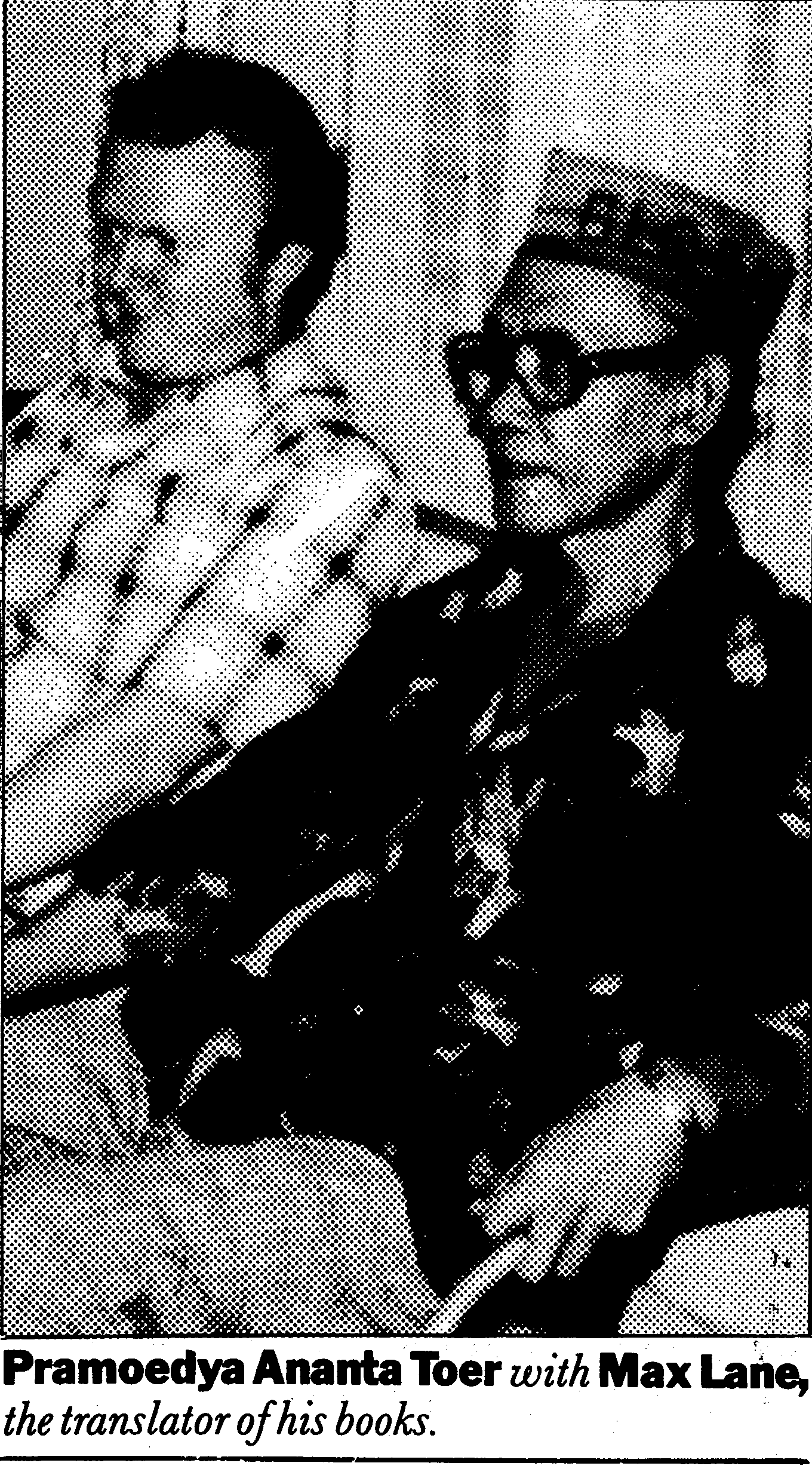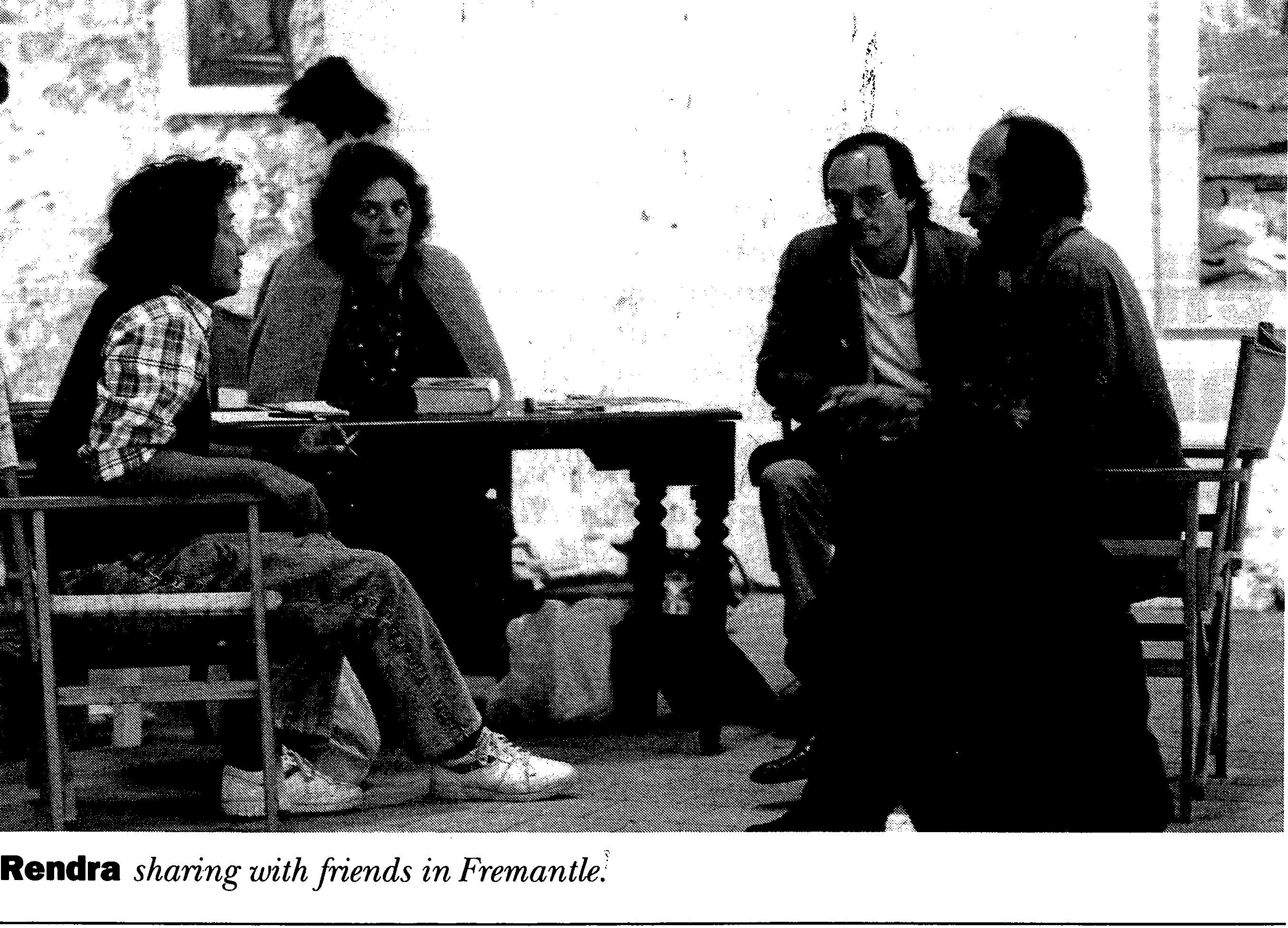Hendrik M.J. Maier
Once upon a time notions and appreciations of Indonesian literature were based on a simple idea: every literary form of writing newly published could be categorised as the work of Angkatan 45 (Generation of 45), a term that referred to the writers who were coming of age in the years of the revolution and were given the floor in cultural life over their Dutch-trained predecessors in their glorification of the newly created nation.
The term Angkatan 45 came in handy for political as well as for cultural reasons. The Republic of Indonesia had declared independence in 1945, followed by four years of struggles and violence and, as is the case in every other new nation, intellectuals and the political elite in the capital felt the need to have a literature that dealt with the formation of the nation.
National literature was written in Indonesian, a new form of Malay which had been made the national language, meant to unite multicultural Indonesia and create a new culture, shared, recognised and expanded by all citizens. The spread of Indonesian became a success story and Indonesian writing, which was supposed to serve as an important device in this story, was primarily created and discussed in the capital, the centre of administrative and commercial life, the place of publishing houses, press and government.
And of course kesusasteraan Indonesia (Indonesian literature) primarily dealt with the revolution and its aftermath, circling around nation-building and nationalism – and their successes and failures. Is literature not always written and appreciated in the shadow of contemporary socio-political developments. And is literature not supposed to foreshadow those developments?
Twenty-first century textbooks should tell readers and critics, young and old, that Indonesian literature had an impressive start. In the 1950s some serious authors emerged – Chairil Anwar, Idrus, Mochtar Lubis, Pramoedya Ananta Toer, Utuy Tatang Sontani, Sitor Situmorang, Nasjah Djamin, Trisnojuwono, Ajip Rosidi. Their work has serious staying power to the present day.
Before long, however, the imagined unity of the nation-state came apart in ideological bickering, economic scandals, military conflicts and social unrest; tensions were reflected in fiery discussions about the desired character of Indonesian literature, which had become dominated by short stories and lyrical poetry rather than novels and essays, in number as well as appreciation. Indonesian literature was meant to consist of evocations, realistic or allegorical, of the nation and its struggles; in practice authors were soon having difficulties in holding their work together around that single issue.
Conflicts in socio-political and economic life and tensions in cultural life eventually led to the military coup of 1965, to the killings of 1965/66, and to the construction of a new socio-political system for the nation, summarised in the term New Order. And in 1966 it was not only a large number of politically engaged intellectuals, farmers and workers who disappeared from the scene: their discourse and worldviews were also silenced.
The Generation of 66 (Angkatan 66) was announced by critic H.B. Jassin and his friends. They had made the Angkatan 45 a term of general acceptance, and now tried to make the term Angkatan 66 acceptable as well. Angkatan 66 was a political statement just like the proclamation of Angkatan 45 had been, but then, the literary work that was published in the late 1960s and after hardly dealt with events in 1966 and before: the confusion of the 1965 revolution and its violent aftermath cast only a very short shadow over newly published work. This happened by the decree of the architects of the New Order and its censors; instead, a wide variety of topics circling around daily life cast their light on prose and poetry, and evocations of the nation, its failures, its struggles, were hard to find. Concurrently, literary criticism, still judge and tastemaker of Indonesian literature, showed more interest in formal features than in content, struggling with the question of that puzzling distinction between good prose and bad literature, confronted as it was with preventive censorship.
Away from nation
Looking back upon cultural life in the New Order from the twenty-first century, it is obvious that new writing and reading of Indonesian literature moved ever more away from the issues of nation and nationalism and their failures. These themes of Old Order literature had been perpetuated in the work of those who continued to write in the serious and idealistic spirit of Angkatan 45 – Putu Wijaya, Mangunwijaya, Kuntowijoyo and Ahmad Tohari.
The movement away from exploring the nation became most visible in the emergence of pop sastra (pop literature): playful, weepy and often ironic forms of prose about daily life problems among urban adolescents and young adults, now the most important group of readers in Indonesia. Towards the end of the New Order, pop literature – Ashadi Siregar, Marga T., Mira W., Eddy Iskandar, Remy Sylado and many more – had marginalised the work of those who, leading critics claimed, continued the tradition of ‘serious’ literature of Angkatan 45,who remained worried about the state of the nation, confused about the country.
 The work of Pramoedya Ananta Toer was the final flame of a national literature committed to the propagation of ‘good and correct Indonesian language’.
The work of Pramoedya Ananta Toer was the final flame of a national literature committed to the propagation of ‘good and correct Indonesian language’.
In their playful and often sloppy form, pop novels – longer short stories, many events, many emotions – moved centre stage in bookshops and newspapers before appearing in critical discussions, competing for public respect and fame with short stories that could only hold on to their authority by way of collections, disjointed and spread out. Only occasionally was there a ‘national novel’ such as Pramoedya Ananta Toer’s This Earth of Mankind, and a performance by the ‘national poet’, W.S. Rendra, the true heir of Chairil Anwar, personification of the Angkatan 45.
After 1970, good prose and bad literature were largely appreciated in apolitical terms, not much different from lyrical poetry. But of course apoliticality is a form of politics as well: commercialism was substituted for idealism, regionalism for nationalism, religion for secularism and, literarily speaking, surrealism and allegoresis intertwined with realism in ever new ways to shed uncanny light on Indonesia’s fragmentary actualities. In the disintegration of national literary life in the later years of the New Order and beyond, an ever wider variety of new terms was emerging to refer to the ongoing variegation: sastra Islam (Islamic literature), sastra pedalaman (literature of the interior), sastra cyber (cyber-lit), sastra daerah (regional literature), sastra kontekstual (contextual literature), , sastra liar (outside literature), sastra Melayu (Malay literature), sastra pesanteren (pesantren literature), sastra wangi (fragrant literature), sastra komik (comic lit) and metropop (metropolitan pop).
Eruption and multiplication
And then came 1998. Another revolution that shook the country and the nation. Another eruption of violence and confusion. But then, the shadows and memories of the events of 1998 and before came to be even less explored in newly published writing post-reformasi than the shadows of 1966 had been by Angkatan 66, let alone the memories of 1945 by Angkatan 45. As if national historiography and its reality disappeared in black holes. As if the nation vanished from literary paper. As if the grim praxis of socio-economic life and actualities no longer really count in literary life: the variegation and multiplication of Indonesian literature has intensified, leading to ever more sastras.
‘Kesusasteraan Indonesia’ has remained as a term, but its central national meaning is no longer clear and the role of good and correct Indonesian, propagated during the New Order for the sake of order and during the Old Order for the sake of cohesion, is no longer clear either. Good prose – the literature of the 1950s, created and rooted in Djakarta, still appreciated in Jakarta – has been placed on the back burner, the work of Pramoedya Ananta Toer serving as its final flame.
Bookshelves are filled with novels that have a very speedy circulation, bestsellers for a day or two, so to speak, like newspapers in days of old, casualness and gossip seem to determine readers’ attention span as much as literary quality and nationalism. Jakarta may still think of itself as being in the center of literary activities – its authors and publishing houses do get the best possible publicity – but it no longer has the authority it had during the Old Order, and even the New Order. Urban areas elsewhere on the islands are taking central stage in their own region, publishing houses come and go, local writers usually see their work appear and disappear before it even reaches Jakarta and authors no longer have to dream of being published in the national capital.
Literary activities are more decentralised than ever before, in short, while shrewd marketing and networking have become as important as writing quality, creating circles and boxes beyond ‘kesusasteraan Indonesia’. The commercial success of, say, Andrea Hirata’s Legion of the Rainbow, Abidah el Khalieqy’s Girl in the turban, Dee Lestari’s Supernova, and Ayu Utami’s Saman is as noteworthy as the literary cool of the work of Seno Gumira Ajidarma, Oka Rusmini, Afrizal Malna and Eka Kurniawan. Moreover, literary activities are no longer restricted to print alone: the numerous internet sites, bloggers, reading and writing clubs – the controversial work of Helvy Tiana Rosa and Taufiq Ismail comes to mind – keep the Indonesian public, digitally savvy and open-minded. They are informed about new movements, novel possibilities, circles of writers beyond the printed page, and involved with public discussions and performativities.
Concurrent with this very confusing dissemination of new work, free of the shadows of events, violence and struggles of the nation, there is still the occasional critic who tries to apply the brakes, to pull literary production back to reality and force the Indonesian reading public, ever growing, ever dispersing, to look back on what Indonesian literature has achieved in the past 70 years and before, since national time began. Older publications are newly discovered and re-published, and literary historiography is given a new impetus, creating the order that generated the chaos of contemporary literary life that does not allow itself to be comprehended.
Kesusasteraan Indonesia seems more than ever to be working on un-defining nationalism and ignoring the nation. Literary work – bad literature, good prose, scattered poetry a cauldron of creativity – has arranged itself in a series of interacting circles, so it seems, each with its own dynamics and possibilities, each running only very partly parallel with the grim reality of Indonesian everyday life, each addressing groups beneath the nation. Indonesian literature has turned into a many-headed machine, with many voices that deserve a readerly ear. And while readers struggle with notions of good taste, the critic can no longer comprehend or even understand, and flies a kite.
Hendrik M.J. Maier is Luce Professor of Southeast Asian Studies, University of California, Riverside.
